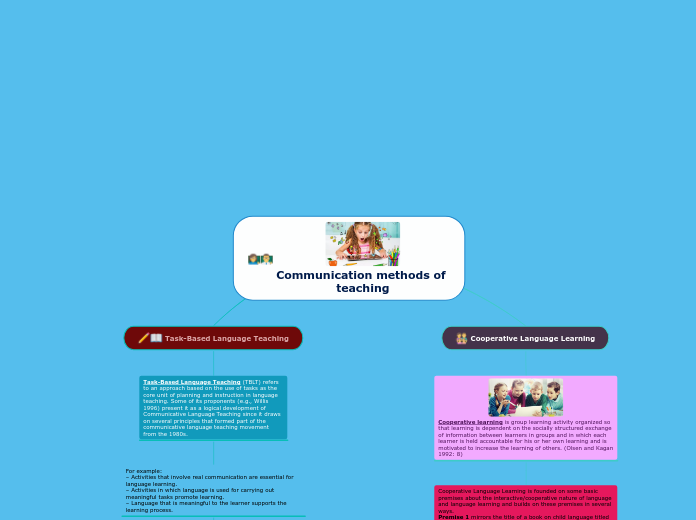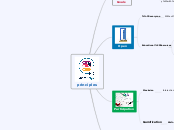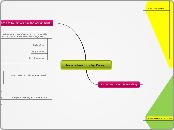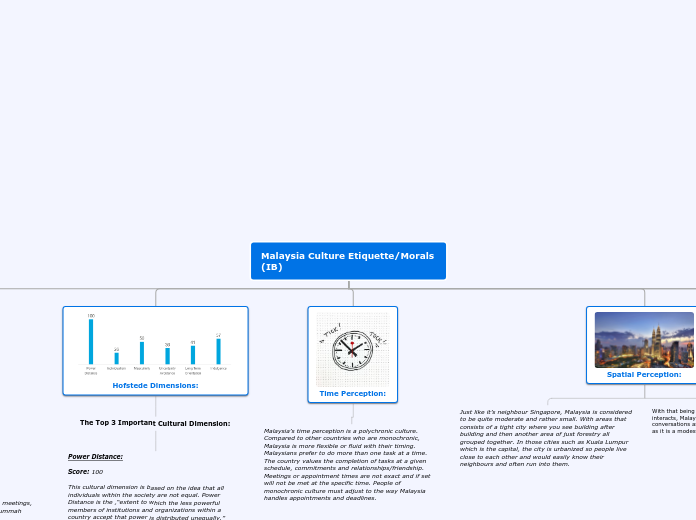Communication methods of teaching
The advantages and disadvantages are the pros and cons of a certain topic, that each person considers thoroughly before making a bigger decision.
Cooperative Language Learning
Cooperative learning is group learning activity organized so that learning is dependent on the socially structured exchange of information between learners in groups and in which each learner is held accountable for his or her own learning and is motivated to increase the learning of others. (Olsen and Kagan 1992: 8)
Cooperative Language Learning is founded on some basic premises about the interactive/cooperative nature of language and language learning and builds on these premises in several ways.
Premise 1 mirrors the title of a book on child language titled Born to Talk (Weeks 1979). The author holds (along with many others) that “all normal children growing up in a normal environment learn to talk. We are born to talk . . . we may think of ourselves as having been programmed to talk . . . communication is generally considered to be the primary purpose of language” (Weeks 1979: 1).
Premise 2 is that most talk/speech is organized as conversation. “Human beings spend a large part of their lives engaging in conversation and for most of them conversation is among their most significant and engrossing activities” (Richards and Schmidt 1983: 117). Premise 3 is that conversation operates according to a certain agreedupon set of cooperative rules or “maxims” (Grice 1975).
From the perspective of second language teaching, McGroarty (1989) offers six learning advantages for ESL students in CLL classrooms:
1. increased frequency and variety of second language practice through different types of interaction
2. possibility for development or use of language in ways that support cognitive development and increased language skills
3. opportunities to integrate language with content-based instruction
4. opportunities to include a greater variety of curricular materials to stimulate language as well as concept learning
5. freedom for teachers to master new professional skills, particularly
those emphasizing communication
6. opportunities for students to act as resources for each other, thus assuming a more active role in their learning
Objectives
Since CLL is an approach designed to foster cooperation rather than competition, to develop critical thinking skills, and to develop communicative competence through socially structured interaction activities, these can be regarded as the overall objectives of CLL. More specific objectives will derive from the context in which it is used.
Types of learning and teaching activities
Johnson et al., (1994: 4–5) describe three types of cooperative learning groups.
1. Formal cooperative learning groups. These last from one class period to several weeks. These are established for a specific task and involve students working together to achieve shared learning goals.
2. Informal cooperative learning groups. These are ad-hoc groups that
last from a few minutes to a class period and are used to focus student attention or to facilitate learning during direct teaching.
3. Cooperative base groups. These are long term, lasting for at least a
year and consist of heterogeneous learning groups with stable membership whose primary purpose is to allow members to give each other the support, help, encouragement, and assistance they need to succeed academically
Teacher Roles
The role of the teacher in CLL differs considerably from the role of teachers in traditional teacher-fronted lesson. The teacher has to create a highly structured and well-organized learning environment in the classroom, setting goals, planning and structuring tasks, establishing the physical arrangement of the classroom, assigning students to groups and roles, and selecting materials and time (Johnson et al. 1994). An important role for the teacher is that of facilitator of learning. In his or her role as facilitator, the teacher must move around the class helping students and groups as needs arise:
1.Take your existing lessons, curriculum, and sources and structure them cooperatively.
2. Tailor cooperative learning lessons to your unique instructional needs, circumstances, curricula, subject areas, and students.
3. Diagnose the problems some students may have in working together and intervene to increase learning groups’ effectiveness.
Learner Roles
The primary role of the learner is as a member of a group who must work collaboratively on tasks with other group members. Learners have to learn teamwork skills. Learners are also directors of their own learning.
They are taught to plan, monitor, and evaluate their own learning, which is viewed as a compilation of lifelong learning skills. Thus, learning is something that requires students’ direct and active involvement and participation. Pair grouping is the most typical CLL format, ensuring the maximum amount of time both learners spend engaged on learning tasks. Pair tasks in which learners alternate roles involve partners in the role of tutors, checkers, recorders, and information sharers.
The role of instructional materials
Materials play an important part in creating opportunities for students to work cooperatively. The same materials can be used as are used in other types of lessons but variations are required in how the materials are used.
For example, if students are working in groups, each might have one set of materials (or groups might have different sets of materials), or each group member might need a copy of a text to read and refer to. Materials may be specially designed for CLL learning (such as commercially sold jigsaw and information-gap activities), modified from existing materials, or borrowed from other disciplines.
1. The teacher assigns students to pairs with at least one good reader in each pair.
2. Student A describes what he or she is planning to write to Student B, who listens carefully, probes with a set of questions, and outlines
Student A’s ideas. Student B gives the written outline to Student A.
3. This procedure is reversed, with Student B describing what he or she isgoing to write and Student A listening and completing an outline of Student B’s ideas, which is then given to Student B.
4. The students individually research the material they need for their compositions, keeping an eye out for material useful to their partner.
5. The students work together to write the first paragraph of each composition to ensure that they both have a clear start on their compositions.
6. The students write their compositions individually.
7. When the students have completed their compositions, they proofread each other’s compositions, making corrections in capitalization, punctuation, spelling, language usage, and other aspects of writing the teacher specifies. Students also give each other suggestions for revision.
8. The students revise their compositions.
9. The students then reread each other’s compositions and sign their names to indicate that each composition is error-free. During this process, the teacher monitors the pairs, intervening when appropriate to he lp students master the needed writing and cooperative skills
Task-Based Language Teaching
Task-Based Language Teaching (TBLT) refers to an approach based on the use of tasks as the core unit of planning and instruction in language teaching. Some of its proponents (e.g., Willis 1996) present it as a logical development of Communicative Language Teaching since it draws on several principles that formed part of the communicative language teaching movement from the 1980s.
For example: – Activities that involve real communication are essential for language learning.
– Activities in which language is used for carrying out meaningful tasks promote learning.
– Language that is meaningful to the learner supports the learning process.
The key assumptions of task-based instruction are summarized by Feez (1998: 17) as:
– The focus is on process rather than product.
– Basic elements are purposeful activities and tasks that emphasize communication and meaning.
– Learners learn language by interacting communicatively and purposefully while engaged in the activities and tasks.
– Activities and tasks can be either:
those that learners might need to achieve in real life;
those that have a pedagogical purpose specific to the classroom.
– Activities and tasks of a task-based syllabus are sequenced according to difficulty.
– The difficulty of a task depends on a range of factors including the previous experience of the learner, the complexity of the task, the language required to undertake the task, and the degree of support available.
Teacher roles
Additional roles are also assumed for teachers in TBI, including:
selector and sequencer of tasks A central role of the teacher is in selecting, adapting, and/or creating the tasks themselves and then forming these into an instructional sequence in keeping with learner needs, interests, and language skill level.
Preparing learners for tasks Most TBLT proponents suggest that learners should not go into new tasks “cold” and that some sort of pretask preparation or cuing is important. Such activities might include topic introduction, clarifying task instructions, helping students learn or recall useful words and phrases to facilitate task accomplishment, and providing partial demonstration of task procedures. Such cuing may be inductive and implicit or deductive and explicit.
Learner Roles
A number of specific roles for learners are assumed in current proposals for TBI. Some of these overlap with the general roles assumed for learners in Communicative Language Teaching while others are created by the focus on task completion as a central learning activity. Primary roles that are implied by task work are:
Group participant Many tasks will be done in pairs or small groups. For students more accustomed to whole-class and/or individual work, this may require some adaptation. Monitor In TBLT, tasks are not employed for their own sake but as a means of facilitating learning. Class activities have to be designed so that students have the opportunity to notice how language is used in communication. Learners themselves need to “attend” not only to the message in task work, but also to the form in which such messages typically come packed.
Pedagogic materials
Instructional materials play an important role in TBLT because it is dependent on a sufficient supply of appropriate classroom tasks, some of which may require considerable time, ingenuity, and resources to develop. Materials that can be exploited for instruction in TBLT are limited only by the imagination of the task designer. Many contemporary language teaching texts cite a “task focus” or “task-based activities” among their credentials, though most of the tasks that appear in such books are familiar classroom activities for teachers who employ collaborative learning, Communicative Language Teaching, or small-group activities. Several teacher resource books are available that contain representative sets of sample task activities (e.g., Willis 1996) that can beadapted for a variety of situations. A number of task collections have also
been put into textbook form for students use
Realia
TBI proponents favor the use of authentic tasks supported by authentic materials wherever possible. Popular media obviously provide rich resources for such materials. The following are some of the task types that can be built around such media products.
Newspapers
– Students examine a newspaper, determine its sections, and suggest
three new sections that might go in the newspaper.
– Students prepare a job-wanted ad using examples from the classified section.
– Students prepare their weekend entertainment plan using the entertainment section.
Television
– Students take notes during the weather report and prepare a map with weather symbols showing likely weather for the predicted period.
– In watching an infomercial, students identify and list “hype” words and then try to construct a parallel ad following the sequence of the hype words.
– After watching an episode of an unknown soap opera, students list the characters (with known or made-up names) and their possible relationship to other characters in the episode.
Internet
– Given a book title to be acquired, students conduct a comparative shopping analysis of three Internet booksellers, listing prices, mailing times, and shipping charges, and choose a vendor, justifying their
choice.
– Seeking to find an inexpensive hotel in Tokyo, students search with three different search engines (e.g., Yahoo, Netscape, Snap), comparing search times and analyzing the first ten hits to determine most useful search engine for their purpose.
Task type Example
1. Diagrams and formations Naming parts of a diagram with numbers and letters of the alphabet as instructed.
2. Drawing Drawing geometrical figures/ formations from sets of verbal instructions
3. Clock faces Positioning hands on a clock to show a given time
4. Monthly calendar Calculating duration in days and weeks in the context of travel, leave, and so on
5. Maps Constructing a floor plan of a house from a description
6. School timetables Constructing timetables for teachers
of particular subjects









